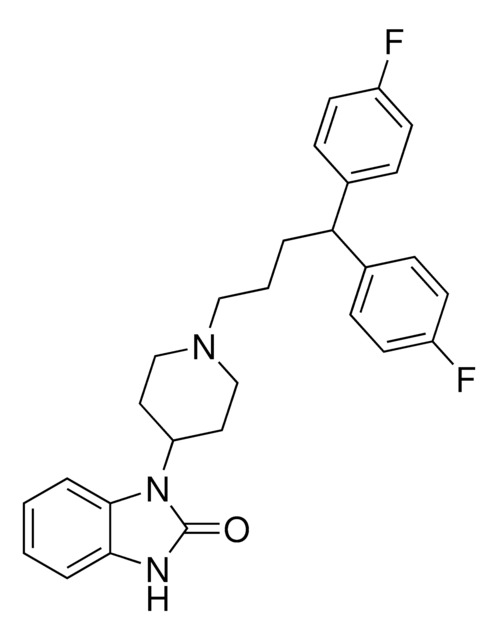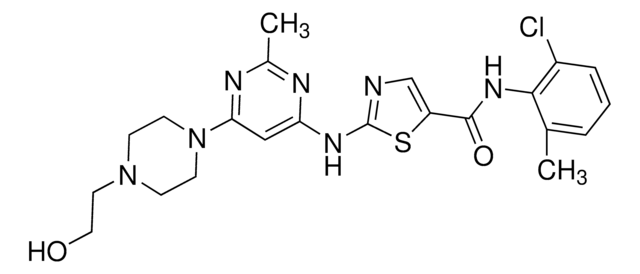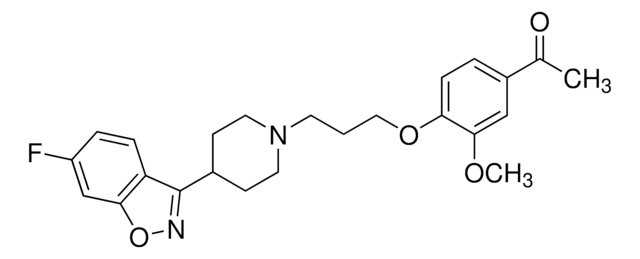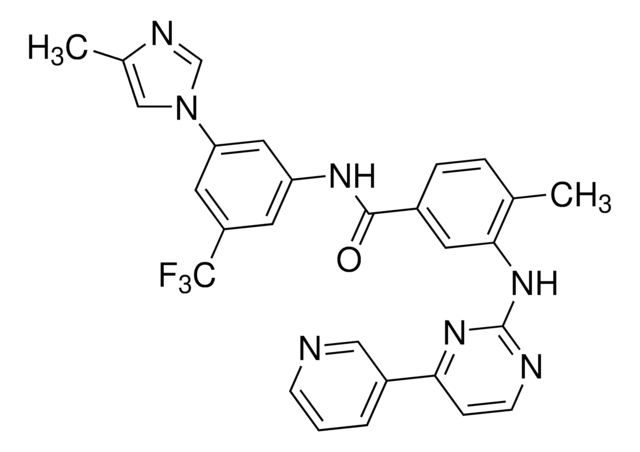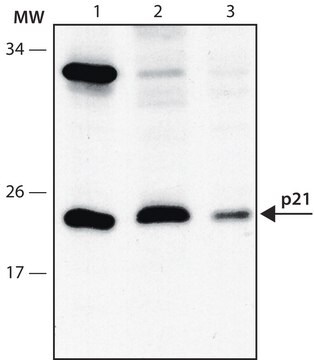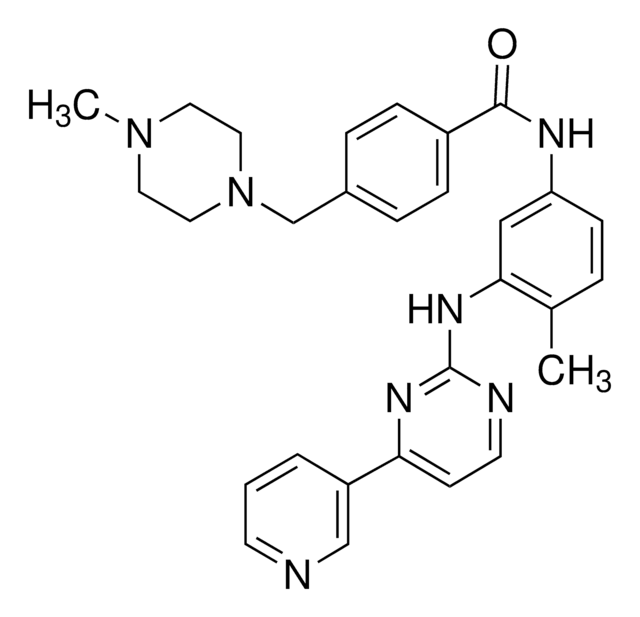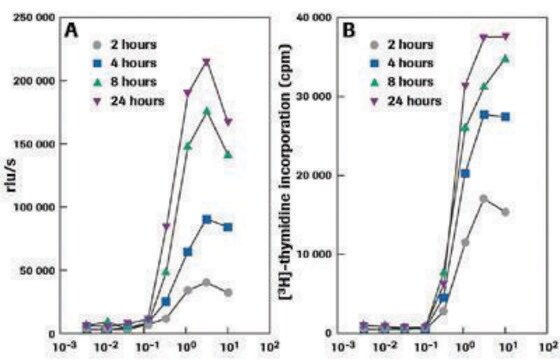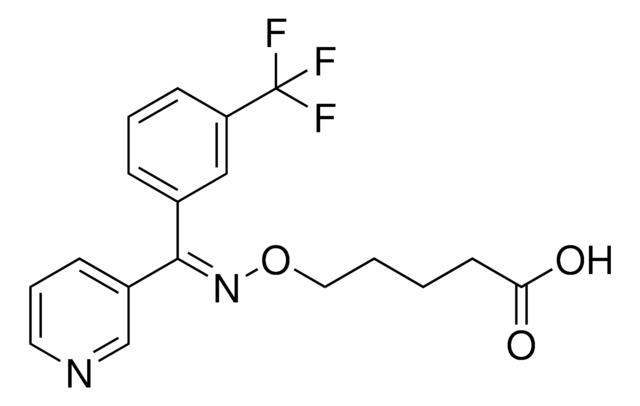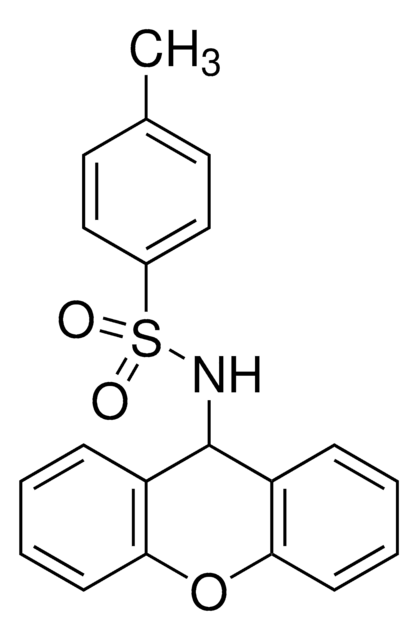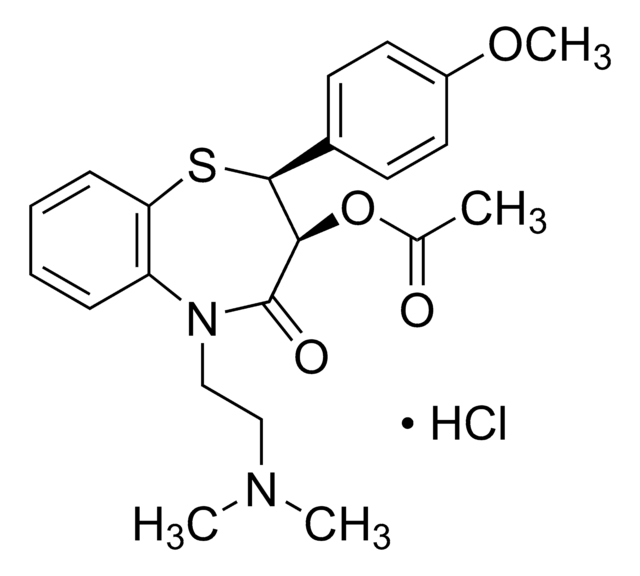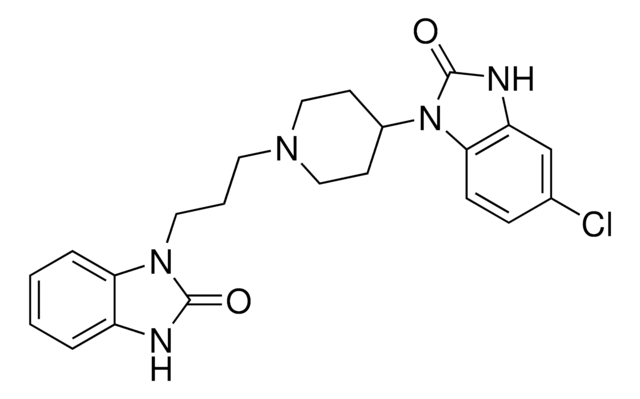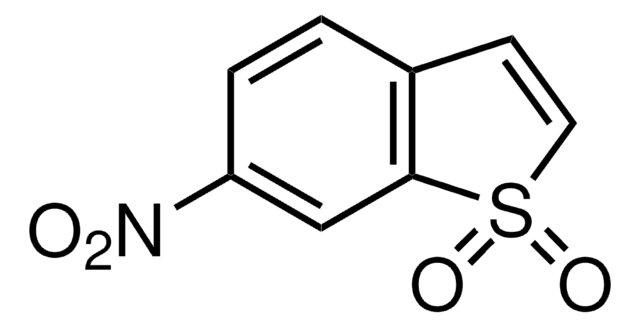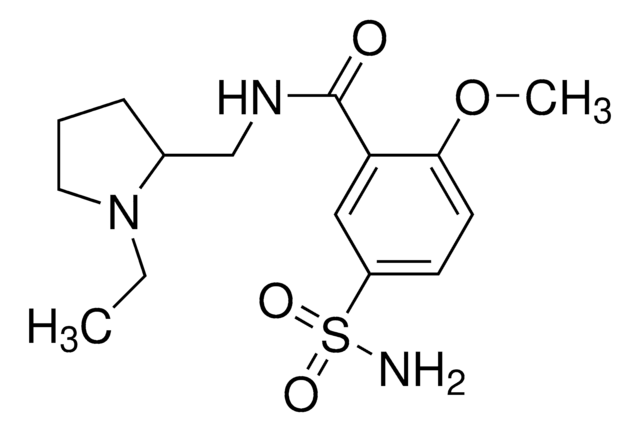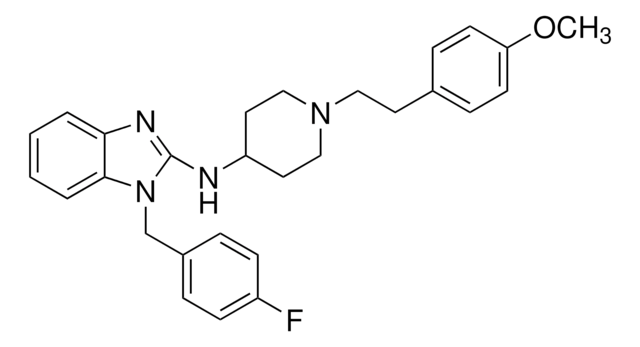P1793
Pimozide
≥98% (TLC), powder, D₂ dopamine receptor antagonist
Synonym(s):
1-[1-[4,4-bis(4-Fluorophenyl)butyl]-4-piperidinyl]-1,3-dihydro-2H-benzimidazol-2-one
About This Item
Recommended Products
Product Name
Pimozide,
form
powder
Quality Level
solubility
DMSO: 18 mg/mL(lit.)
chloroform: 5 mg/mL
H2O: insoluble(lit.)
originator
Teva
storage temp.
2-8°C
SMILES string
Fc1ccc(cc1)C(CCCN2CCC(CC2)N3C(=O)Nc4ccccc34)c5ccc(F)cc5
InChI
1S/C28H29F2N3O/c29-22-11-7-20(8-12-22)25(21-9-13-23(30)14-10-21)4-3-17-32-18-15-24(16-19-32)33-27-6-2-1-5-26(27)31-28(33)34/h1-2,5-14,24-25H,3-4,15-19H2,(H,31,34)
InChI key
YVUQSNJEYSNKRX-UHFFFAOYSA-N
Gene Information
human ... ABCB1(5243) , CACNA1G(8913) , CYP3A4(1576) , DRD1(1812) , DRD2(1813) , DRD3(1814) , DRD4(1815) , DRD5(1816) , HTR2A(3356) , HTR7(3363) , KCNH1(3756) , KCNH2(3757) , OPRD1(4985)
mouse ... Abcb1a(18671) , Abcb1b(18669)
rat ... Scnn1g(24768)
Looking for similar products? Visit Product Comparison Guide
Biochem/physiol Actions
Features and Benefits
Choose from one of the most recent versions:
Already Own This Product?
Find documentation for the products that you have recently purchased in the Document Library.
Customers Also Viewed
Our team of scientists has experience in all areas of research including Life Science, Material Science, Chemical Synthesis, Chromatography, Analytical and many others.
Contact Technical Service